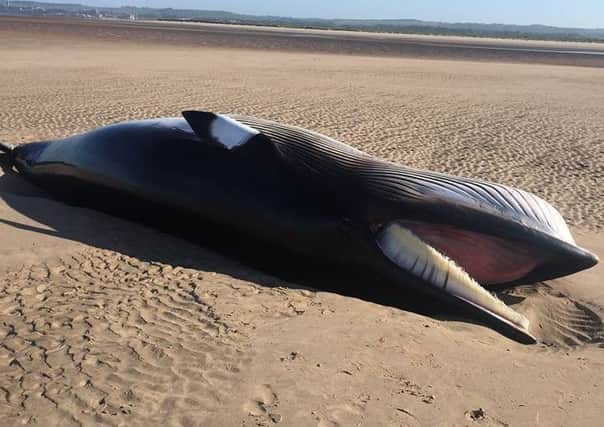Speculation over whale death points to creel lines


Officers from the Fife Coast and Countryside Trust received word on Wednesday night that the whale had been spotted initially at the West Sands.
Ranald Strachan, ranger said: “The whale had drifted in on the tide and ended up in the Eden Estuary. It appeared to have been dead for a couple of days.”
Advertisement
Hide AdAdvertisement
Hide AdThe Scottish Marine Stranding Scheme – who collate all data from stranded marine animals around Scotland – were called in from Inverness to perform an autopsy on the mammal in St Andrews.
Often carcasses of stranded whales, dolphins and porpoises are left to decompose naturally but Ranald explained that due to the muddy nature of the site and the high public usage of the area it was safer to dispose of the carcass but the reason for the beaching still remains a mystery.
Ranald said: “The reasons for whales beaching themselves is still part mystery but it could be down to navigation. The North Sea is very, very shallow for whales and it is a challenge for them.”
“Although from the initial photograph and the damage done to the whale, it is suspected that it got tangled in creel line.
Advertisement
Hide AdAdvertisement
Hide Ad“We have an issue around the coast with washed up creels that is starting to become a real worry.”
The sheltered St Andrews bay experiences easterly air flow and sizable waves. The winter storms can pick up and wreck the lobster pots and before they wash up, they move around in the shallow water posing a potential danger to marine life.